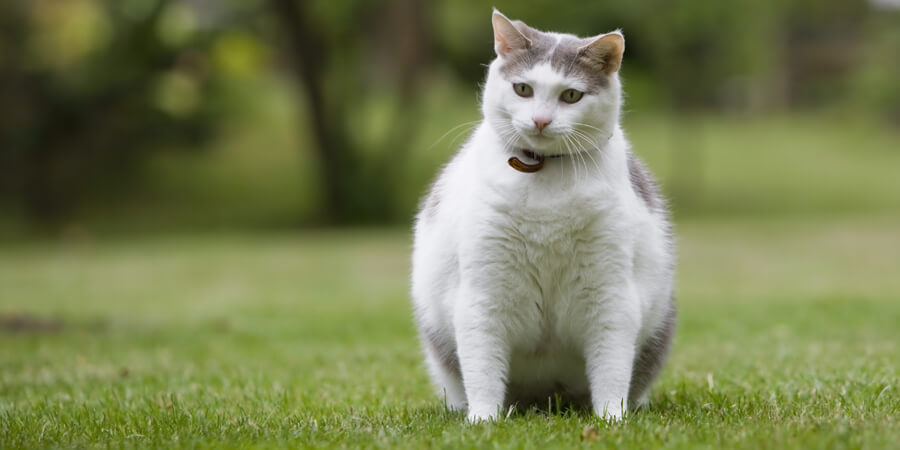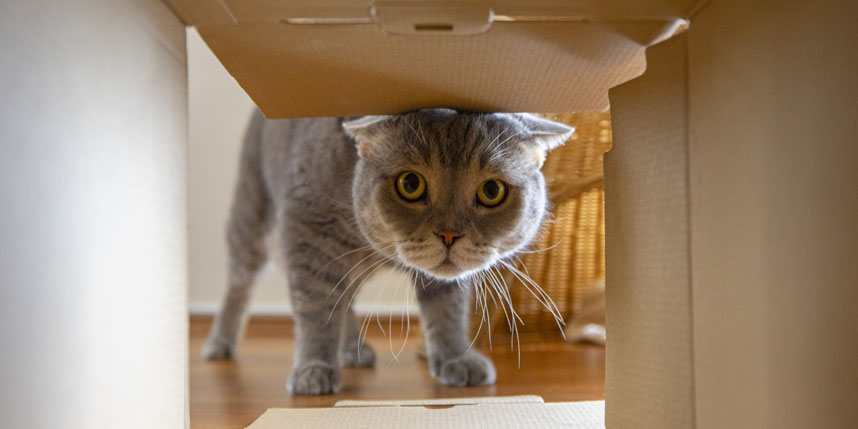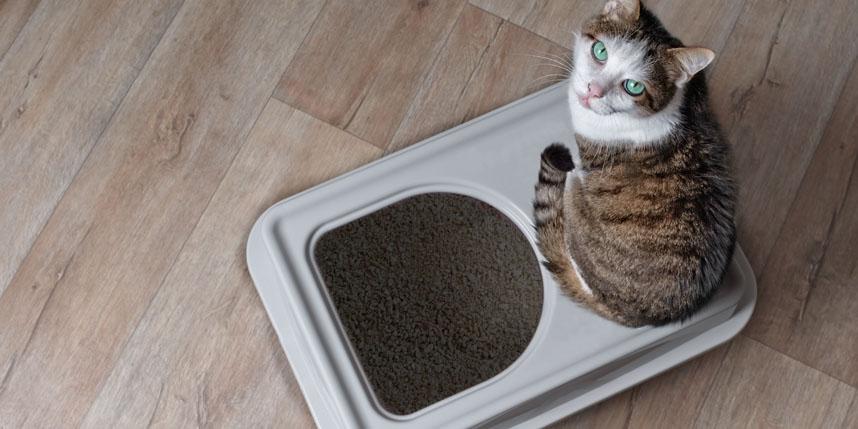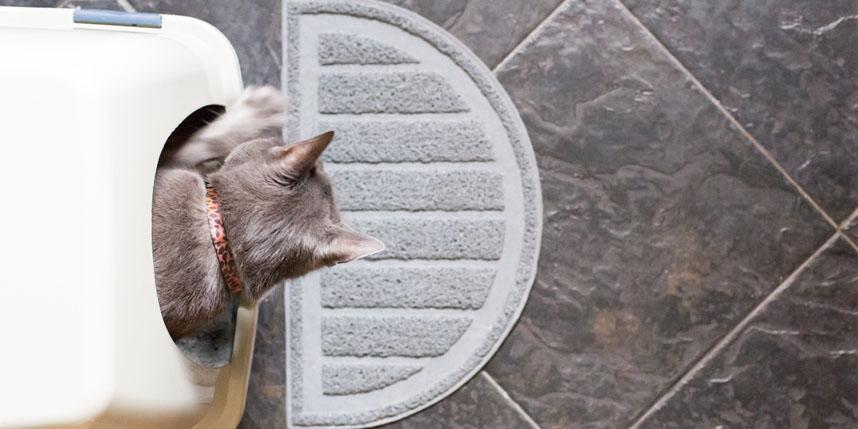THE CURIOUS TALE OF CATS AND BOXES
The curious tales of cats and boxes — including five reasons for this cardboard love affair backed by science.

How to Determine If Your Cat Is Overweight
Does your cat seem a little—er, fluffy—lately? Determining if your cat is overweight isn’t as simple as stepping on a bathroom scale.
Healthy cats come in all shapes and sizes, and there’s no single “right” weight. Depending on breed and body type, a healthy, average weight for a cat can range anywhere from 7 to 25 pounds, according to the Association for Pet Obesity Prevention (APOP).

Why Cat Weight Matters
While 25lbs may fall into the acceptable weight range for a large breed, like Maine Coons, a small to medium size cat breed, like a Siamese, will likely develop a number of health issues even slightly under that weight.
Though those extra pounds may seem cute and innocent, obesity is a real problem for some cats and may lead to joint problems, diabetes and shortened life span. We’re here to help.
A Simple Test to Determine if Your Cat is Overweight

1. Take a look at your cat from above.
You should be able to see a noticeable “waist” between your cat’s ribcage and her hips. If your cat is too fluffy to tell for sure, run your hands down her sides to feel for an indentation.

2. Look from the side.
A lean cat should slope upwards from the ribcage to the back legs, rather than sporting a tummy pouch. Older cats may be prone to having a little “sag” in their stomach region, but this should be somewhat distinguishable from a round tummy.

3. Give your cat a gentle squeeze.
Feel your cat’s torso. You should be able to make out her spine and ribs clearly, without pressing too hard.
5 TIPS TO HELP YOUR CAT LOSE WEIGHT
If your fur baby appears to be above the average cat weight, don’t despair. Just like with people, your cat’s weight is largely decided by two things: how much she eats, and how much she exercises.
Luckily, you have a lot of control over both factors. The ASPCA suggests taking these steps to help get your fur baby down to an average cat weight:

1. Cut out the table scraps.
Keep your cat at a distance when you’re eating, so you’re not tempted to feed her morsels from your plate. Though you may be feeding them something healthy, your cat doesn’t need the extra calories in addition to their typical meals.

2. Switch to smaller meals.
Instead of giving your cat two large meals to feast on, try switching to multiple smaller meals so they aren’t able to binge eat their food.

3. Only feed your cat from her bowl.
During this weight loss journey, it’s important to help your cat re-learn good eating habits, like eating from her bowl and sticking to smaller portions. Many cats only eat until they are full, but if they are allowed to consume more they may begin to eat past this point – which will cause them to gain weight.

4. Cut back on snacks and treats.
While treats are a fun way to provide positive encouragement for your cat, they also typically contain more calories than cat food and can add up quickly. It can be hard saying “no” to their adorable meows, but cutting back on treats is for their benefit in the long-term.

5. Give your cat plenty of attention.
Some cats turn to eating when they are bored. Giving your cat some extra attention, especially with increased play time will help to keep them occupied and away from their food bowl. Extra play time is also good exercise for their body and mind!
If Your Cat is Having Trouble Losing Weight
If the above tactics don’t produce results within a month or two, schedule a visit to the vet to test for an underlying medical problem, such as hypothyroidism, and discuss what and how much your cat should be eating.
Help your cat slim back down to a healthy weight, so nothing holds them back from feeling their best. Head to our blog for even more cat care tips and cat love.



